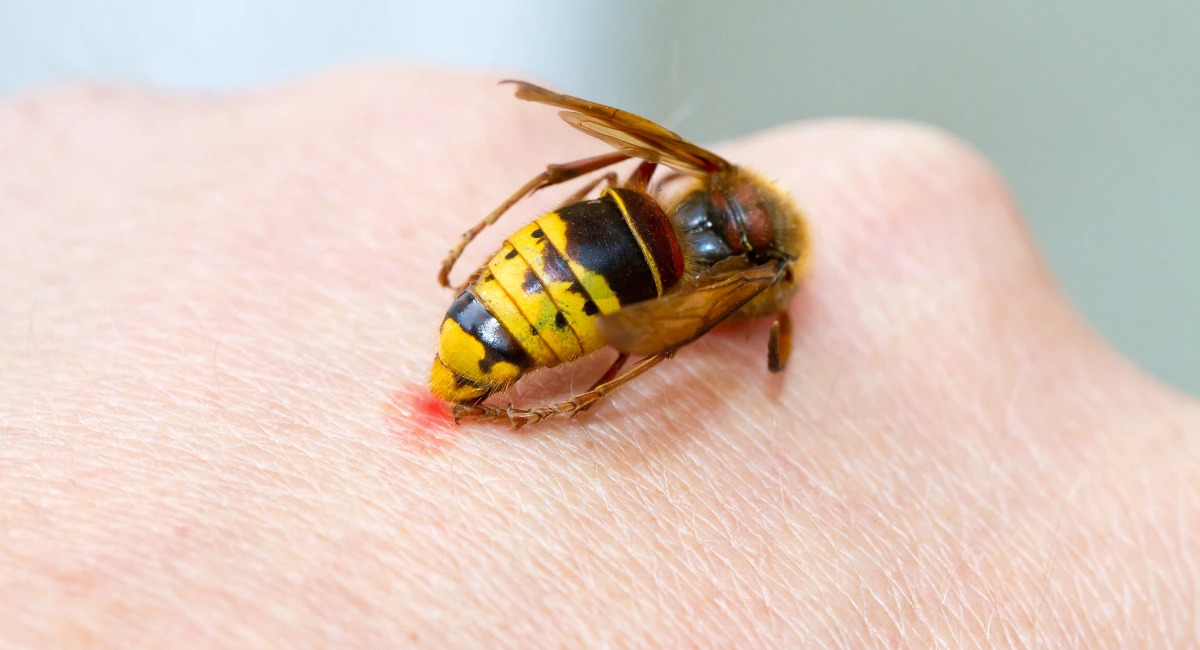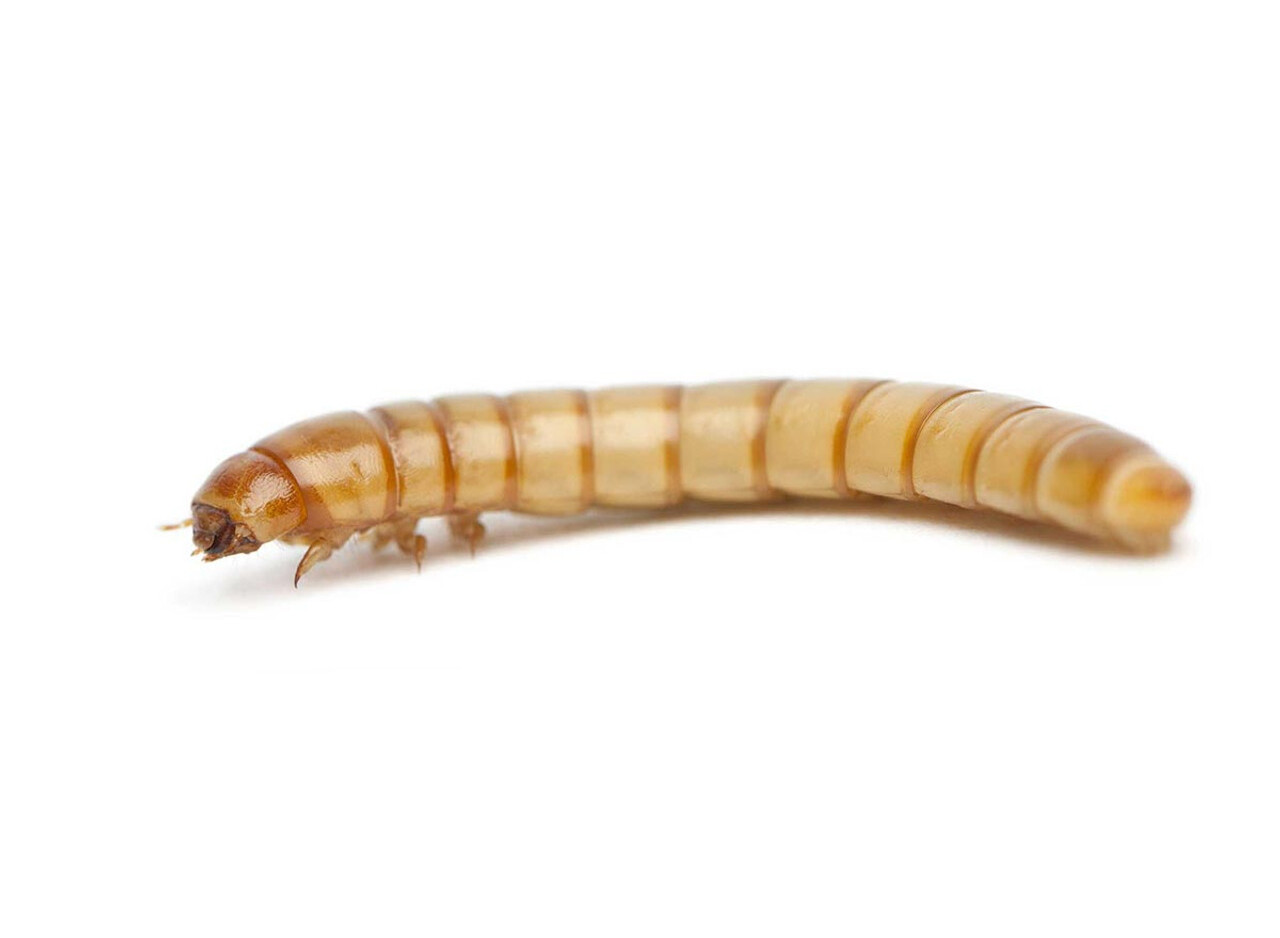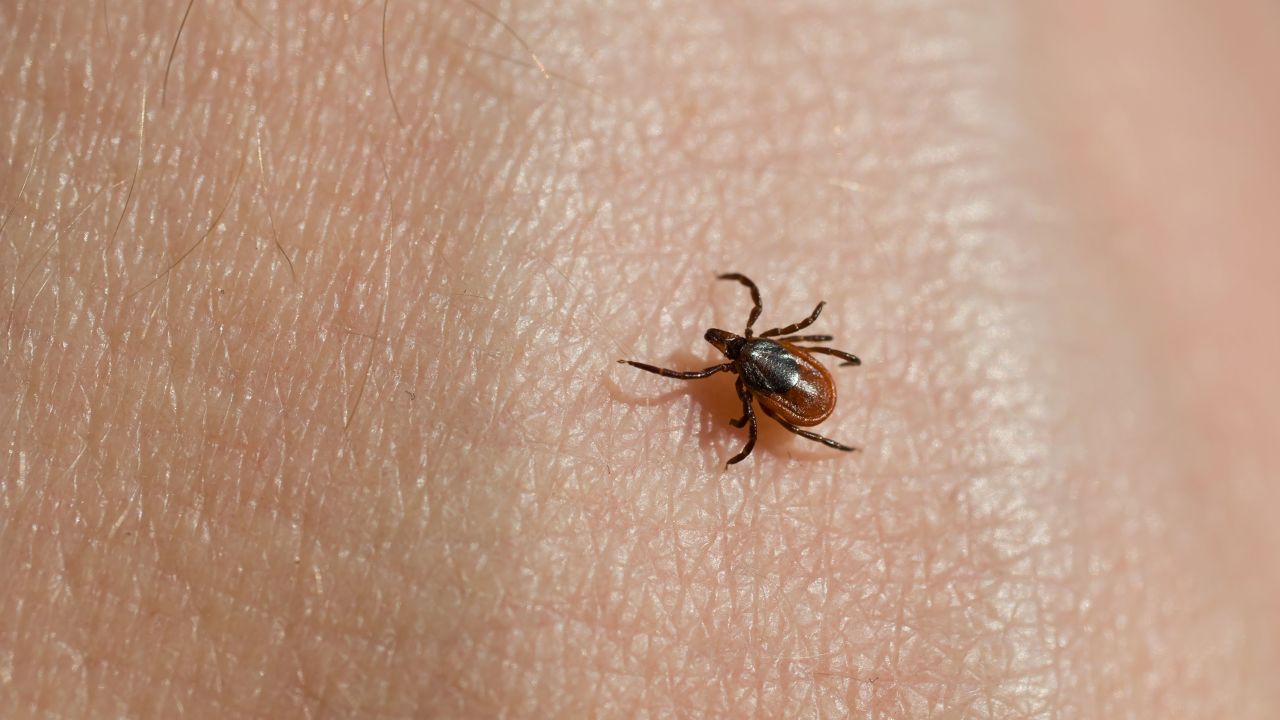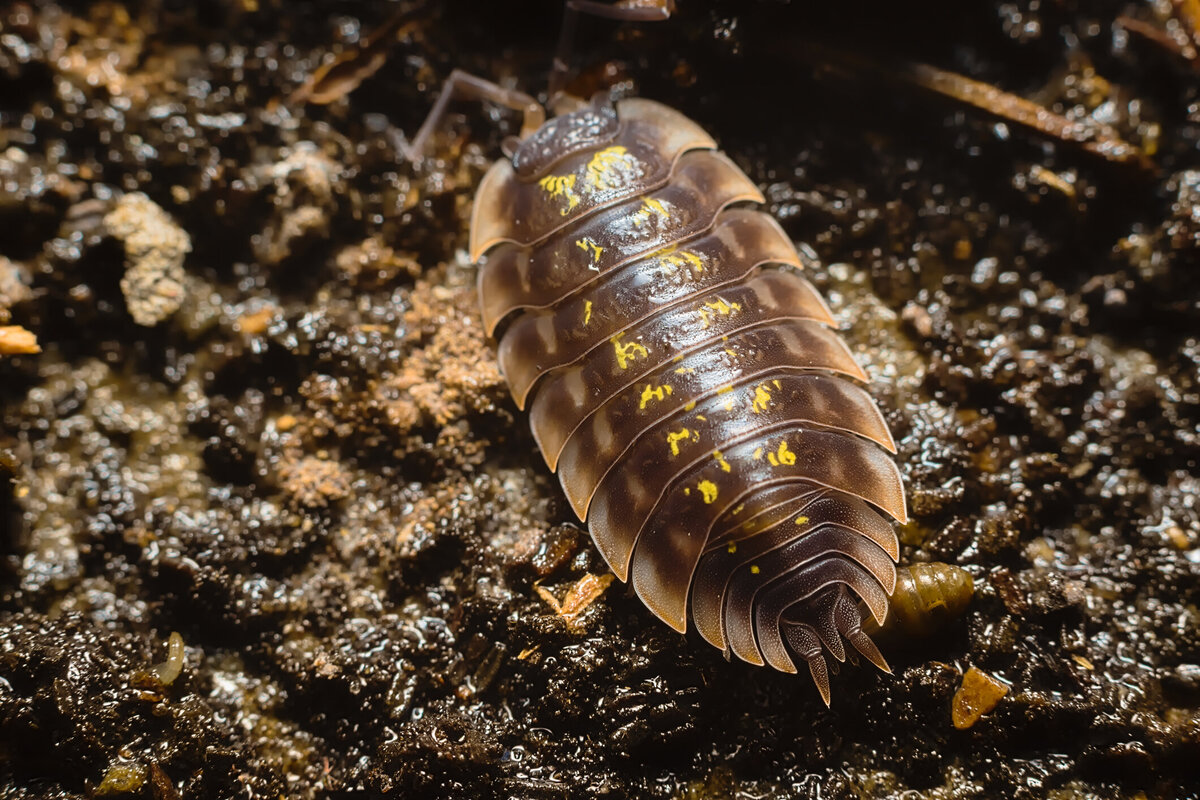Home>Gardening News and Trends>Latest News>What Color Can Stinging Insects Not See


Latest News
What Color Can Stinging Insects Not See
Published: December 11, 2023
Discover the latest news on what color stinging insects cannot see. Gain valuable insights and protect yourself from potential dangers.
(Many of the links in this article redirect to a specific reviewed product. Your purchase of these products through affiliate links helps to generate commission for Chicagolandgardening.com, at no extra cost. Learn more)
Table of Contents
- Introduction
- The Physiology of Stinging Insects’ Color Vision
- Colors Visible to Stinging Insects
- Colors Stinging Insects Struggle to See
- Factors Affecting Stinging Insects’ Color Vision
- The Impact of Color Perception on Stinging Insects’ Behavior
- Preventative Measures: Using Colors to Repel Stinging Insects
- Conclusion
Introduction
Welcome to the fascinating world of stinging insects and how their perception of color impacts their behavior. Stinging insects, such as bees, wasps, and hornets, play vital roles in our ecosystem as pollinators and predators of other insects. These creatures have complex visual systems that allow them to navigate their surroundings, locate food sources, and communicate with other members of their colony.
One intriguing aspect of stinging insects’ visual capabilities is their ability to perceive a wide range of colors. However, not all colors are seen equally by these insects. Some colors are highly visible to them, while others are more challenging to detect. This distinction has significant implications for their foraging behavior and interactions with their environment.
In this article, we will delve into the physiology of stinging insects’ color vision, explore the colors that are most visible and least visible to them, examine the factors that influence their color perception, and discuss the impact that color has on their behavior. Furthermore, we will explore how humans can utilize this knowledge to repel stinging insects and protect themselves from potential stings.
So, if you have ever wondered about the colors that stinging insects can or cannot see, and how this relates to their behavior and interaction with humans, buckle up and prepare to be amazed by the world of stinging insects’ color vision!
The Physiology of Stinging Insects’ Color Vision
To understand how stinging insects perceive color, it is essential to explore the intricacies of their visual system. Stinging insects, like bees and wasps, have compound eyes consisting of many individual units called ommatidia. Each ommatidium contains specialized photoreceptor cells that respond to different wavelengths of light, allowing the insect to perceive a range of colors.
The photoreceptor cells in stinging insects are most sensitive to ultraviolet (UV) light, which is invisible to humans. This ability allows them to detect ultraviolet patterns on flowers, guiding them to nectar sources. In addition to UV light, they can perceive a broad spectrum of colors but have a peak sensitivity in the blue and green range. As a result, they can distinguish various shades of these colors with great precision.
Interestingly, stinging insects have relatively poor color discrimination in the red end of the spectrum. Research suggests that they might struggle to differentiate red from green or perceive red as a different shade. This is because they possess fewer red-sensitive photoreceptor cells compared to humans.
It is important to note that not all stinging insects have the same color vision abilities. For instance, honeybees have excellent color vision and can see colors ranging from ultraviolet to blue, green, and even red, although red appears less vibrant to them. In contrast, wasps and other vespid species have more limited color vision, with a reduced capacity to perceive longer wavelengths.
Furthermore, stinging insects have a fascinating ability called polarization vision. They can detect patterns of polarized light that are invisible to the human eye. This extraordinary adaptation helps them navigate and orient themselves accurately, particularly on cloudy or overcast days when landmarks might be challenging to identify.
Understanding the physiology of stinging insects’ color vision provides valuable insights into the colors that they are most and least sensitive to. This knowledge forms the foundation for exploring the colors that are visible to them and how it influences their behavior and interactions with the environment, as we will explore in the following sections.
Colors Visible to Stinging Insects
Stinging insects have unique color vision capabilities that allow them to perceive a wide range of colors in their environment. While their color vision may not be as sophisticated as that of humans, they can still distinguish between various colors with remarkable precision and sensitivity.
These insects are highly sensitive to blue and green colors, perceiving them as vibrant and distinct. They can easily detect shades of these colors and use them as cues for identifying flowers, potential food sources, and landmarks. This sensitivity to blue and green is particularly evident in honeybees, which have the ability to distinguish various shades and intensities of these colors.
Furthermore, stinging insects, including bees and wasps, are also adept at perceiving ultraviolet (UV) light, which is invisible to the human eye. Many flowers have unique UV patterns or markings called nectar guides that serve as attractive signals for pollinators. Stinging insects can see these patterns and use them as guiding signals to locate nectar-rich flowers.
While stinging insects have excellent color vision in the blue and green range, they have reduced sensitivity to colors on the red end of the spectrum. They perceive red as less vibrant and have difficulty discriminating between different shades of red. This limitation is due to their fewer red-sensitive photoreceptor cells, which are essential for perceiving longer wavelengths of light.
Overall, stinging insects have a remarkable ability to see and differentiate a wide range of colors, particularly in the blue and green spectrum. Their color vision plays a crucial role in various aspects of their behavior, including foraging, navigation, and communication within their colony.
Colors Stinging Insects Struggle to See
While stinging insects have an impressive color vision, there are certain colors that they struggle to see or perceive accurately. One prominent example of such colors is red. Stinging insects, including bees and wasps, have limited sensitivity to red wavelengths and perceive them differently than humans do.
Due to their fewer red-sensitive photoreceptor cells, stinging insects often have difficulty discriminating between shades of red or perceiving red as a vibrant color. To them, red may appear as a different shade, such as grayish or less intense. This disparity in color perception is particularly noticeable in vespid wasps, which have a relatively limited capacity to detect longer wavelengths.
In addition to red, stinging insects might also struggle with colors in the dark or dull range, such as brown or black. These colors may blend with the surroundings, making them less easily distinguishable for these insects. However, it is important to note that in certain situations, stinging insects may still be able to identify objects of these colors based on other visual cues, such as shape or contrast.
Another interesting aspect is the issue of color saturation. Stinging insects, specifically honeybees, have been shown to have difficulty perceiving subtle color differences when the level of color saturation is low. This means that colors that appear pale or washed out to us may appear even less distinct to these insects, impacting their ability to differentiate between similar shades or patterns.
It is worth mentioning that while stinging insects may struggle with specific colors, their ability to perceive ultraviolet (UV) light and distinguish between shades of blue and green compensates for any limitations. These colors, along with UV patterns on flowers and landmarks, are more pronounced and easily detectable by stinging insects.
Understanding the colors that stinging insects struggle to see provides valuable insights into their visual limitations and how it affects their behavior and interactions. By taking these factors into account, researchers and individuals can further develop strategies to repel or deter stinging insects effectively.
Factors Affecting Stinging Insects’ Color Vision
Several factors can influence the color vision of stinging insects, affecting their ability to perceive and discriminate between different colors. These factors play a crucial role in shaping their visual capabilities and how they interact with their environment.
One primary factor that affects stinging insects’ color vision is lighting conditions. Brightness and intensity of light can significantly impact their ability to perceive colors accurately. For instance, in low-light conditions, such as during dusk or dawn, stinging insects may experience reduced color discrimination and rely more on other visual cues, such as shape or pattern.
Another factor that influences their color vision is background contrast. The contrast between an object and its surroundings affects how stinging insects perceive its color. If an object blends too closely with its background, it may be more difficult for these insects to distinguish its color accurately. This is particularly relevant for colors that are closer to the environment’s predominant color, such as brown objects in a forest setting.
The age of the stinging insects can also affect their color vision. Studies have shown that older honeybees have a diminished ability to perceive colors accurately compared to younger bees. This decline in color vision could impact their foraging efficiency and overall behavior within the colony.
The environmental temperature can also influence color perception in stinging insects. Changes in temperature can affect the sensitivity of their photoreceptor cells, potentially altering their perception of certain colors. Factors such as humidity and air quality can also impact their visual capabilities to some extent.
Genetics may also play a role in stinging insects’ color vision. Different species and even individuals within a species may have variations in their photoreceptor cells, leading to differences in color sensitivity and perception. These genetic variations can contribute to the diverse color vision capabilities observed among different stinging insect species.
By understanding these factors that affect stinging insects’ color vision, researchers and individuals can gain insights into the intricacies of their visual system. This knowledge can be used to develop strategies for effective pest control, enhance pollination efforts, and promote a better understanding of these remarkable creatures.
The Impact of Color Perception on Stinging Insects’ Behavior
The color perception of stinging insects has a significant impact on their behavior and interactions with their environment. The way they see and perceive colors influences various aspects of their lives, from foraging and pollination to communication and predator avoidance.
One key impact of color perception is on foraging behavior. Stinging insects, such as bees, rely on colors as visual cues to locate flowers and identify potential food sources. The vibrant colors of flowers, along with their UV patterns, serve as powerful signals to attract these insects. By perceiving colors accurately, stinging insects can efficiently navigate their surroundings and extract nectar and pollen from the appropriate floral sources.
Color perception also plays a crucial role in pollination, as stinging insects inadvertently transfer pollen between flowers. The ability to accurately detect and differentiate colors helps ensure that they visit flowers of the same species, facilitating successful pollination and plant reproduction.
Furthermore, color perception affects stinging insects’ ability to communicate within their colony. Bees, for example, use specific dance patterns to convey information about the location and quality of food sources to their fellow hive members. Colors associated with these food sources may serve as additional signals that help communicate the valuable information effectively.
In terms of predator avoidance, color perception is vital for stinging insects to recognize potential threats and respond accordingly. They may have innate aversions to certain colors that are associated with predators or danger. For instance, some stinging insects tend to avoid colors resembling those of their natural predators, such as yellow and black stripes or patterns.
Additionally, the impact of color perception extends to their interactions with humans. Bright or vibrant colors, especially in clothing or objects, can attract stinging insects. This is because these colors may resemble the colors of flowers or other food sources in their visual spectrum. By understanding their color preferences and aversions, humans can make informed choices regarding their attire and surroundings to minimize the risk of attracting stinging insects.
Overall, color perception profoundly influences various aspects of stinging insects’ behavior, including foraging, pollination, communication, and predator avoidance. Their ability to perceive and respond to colors allows them to navigate their environment, locate resources, and ensure the survival of their colony.
Preventative Measures: Using Colors to Repel Stinging Insects
Understanding the colors that stinging insects are attracted to or avoid can help us develop preventative measures to repel these insects effectively. By strategically using colors, we can minimize the risk of encountering stinging insects and reduce the chances of getting stung.
One approach is to avoid wearing bright floral patterns or clothing with colors that closely resemble flowers. These colors can inadvertently attract stinging insects, as they may mistake them for potential food sources. Opting for neutral-colored clothing, such as khaki or beige, can help minimize the chances of attracting these insects.
Similarly, using caution when choosing colors for outdoor decorations and furniture can make a difference. Stinging insects may be drawn to vibrant or highly contrasting colors, so opting for more subdued colors for patio furniture or outdoor structures can help deter them.
Another preventative measure is to consider using colors that stinging insects naturally avoid. For example, yellow and black stripes or patterns can mimic the appearance of their predators, causing them to stay away. By incorporating these colors into outdoor decor or clothing choices, it may decrease the chances of stinging insect encounters.
On the other hand, colors that stinging insects are naturally attracted to, such as blue and purple, can be used as bait or traps to capture and remove these insects from specific areas. By setting up traps in these colors, it is possible to lure and contain stinging insects away from human-populated areas.
It is important to note that while colors can be useful in repelling or attracting stinging insects, they are not the only factor to consider. Odors, movement, and proximity to nests or food sources are also critical factors that can influence stinging insect behavior. Therefore, a comprehensive approach that combines various strategies, including color selection, is the most effective way to prevent stinging insect encounters.
By understanding the impact of colors on stinging insects’ behavior and utilizing this knowledge to inform our choices, we can minimize the risk of stings and coexist with these creatures in a safer and more harmonious manner.
Conclusion
Color perception plays a significant role in the behavior and interactions of stinging insects. Their ability to perceive and discriminate between different colors impacts various aspects of their lives, from foraging and pollination to communication and predator avoidance. Stinging insects have a remarkable ability to see a wide range of colors, with blue and green being particularly vivid and easily distinguishable. They are also sensitive to ultraviolet light, allowing them to detect patterns that are invisible to the human eye.
However, stinging insects struggle to see certain colors, such as red, and may have reduced sensitivity to colors in the dark or dull range. Factors such as lighting conditions, background contrast, age, and environmental temperature can also influence their color perception. By understanding these factors, we can gain insights into the visual limitations of stinging insects and how they perceive the world around them.
Color perception not only influences their behavior but also has practical implications for human interactions with stinging insects. By being mindful of the colors we wear, the colors of outdoor decorations, and the colors used in traps or repellents, we can minimize the risks of stinging insect encounters. We can also utilize colors that stinging insects naturally avoid to deter them from specific areas.
However, it is important to remember that color perception is not the sole factor that influences stinging insects’ behavior. Other factors such as odors, movement, and proximity to nests and food sources also play a crucial role. Therefore, a comprehensive approach that combines various strategies, including color selection, is essential in effectively repelling or attracting stinging insects.
In conclusion, understanding the complexities of stinging insects’ color vision provides valuable insights into their behavior and helps us develop strategies for coexistence. By utilizing this knowledge and incorporating preventative measures, we can reduce the chances of stinging incidents and foster a safer environment for both humans and stinging insects.







